Pred Forte is a prescription‑strength topical corticosteroid eye drop containing 1% prednisolone acetate. It’s commonly used to tame inflammation after eye surgery, treat severe allergic conjunctivitis, and manage uveitis. While it’s a go‑to for many ophthalmologists, a suite of other steroids and non‑steroidal drops can do the job with fewer side‑effects or lower cost. This guide walks through the major differences, so you can decide when Pred Forte makes sense and when an alternative might be wiser.
Understanding Pred Forte (Prednisolone)
Prednisolone belongs to the glucocorticoid class, mimicking the body’s own cortisol to suppress immune responses. In the eye, it reduces cytokine production, stabilises cell membranes, and limits leukocyte infiltration. The 1% concentration classifies Pred Forte as a medium‑to‑high‑potency steroid, delivering rapid relief within hours.
- Typical indications: postoperative inflammation, anterior uveitis, severe allergic conjunctivitis, corneal graft rejection.
- Dosage: usually one drop every 1-2 hours while symptoms are active, then tapering over a week or two.
- Onset of action: 30‑60 minutes for noticeable reduction in redness and swelling.
Because it penetrates the cornea well, Pred Forte can reach the anterior chamber more effectively than some newer, softer steroids. However, that potency brings a higher risk of side‑effects if used improperly.
How to Compare Eye‑Drop Steroids
When you line up Pred Forte against other options, focus on five practical factors:
- Potency & depth of penetration - how strong the anti‑inflammatory effect is and whether it reaches deeper ocular tissues.
- Onset & duration - how quickly relief starts and how long the effect lasts between doses.
- Side‑effect profile - especially cataract formation, intra‑ocular pressure (IOP) spikes, and delayed wound healing.
- Cost & availability - whether it’s covered by Australian PBS, generic versions, or requires a special order.
- Patient convenience - bottle size, preservative content, and dosing frequency.
These criteria let you match a drug’s strengths to the clinical scenario and the patient’s tolerance.
Top Alternatives to Pred Forte
Below are the most frequently prescribed eye‑drop steroids and a couple of non‑steroidal options that clinicians turn to when they need a gentler touch.
Dexamethasone (0.1% or 0.5%)
Dexamethasone is a high‑potency steroid, roughly twice as strong as prednisolone. It’s excellent for severe uveitis but carries a higher chance of IOP spikes. The 0.1% formulation is often used for short‑term peaks, while 0.5% is reserved for intense inflammation.
Loteprednol etabonate (0.5%)
Loteprednol is marketed as a “soft” steroid. Its ester linkage breaks down quickly in ocular tissues, so it offers a lower risk of cataracts and glaucoma. It’s ideal for mild‑to‑moderate allergic conjunctivitis and postoperative care when the surgeon wants to minimise steroid‑related complications.
Fluorometholone (0.1%)
Fluorometholone sits between prednisolone and loteprednol in potency. It’s often chosen for patients prone to steroid‑induced IOP rise because it’s less likely to trigger pressure spikes than prednisolone, yet it still provides solid anti‑inflammatory action.
Hydrocortisone (0.5% or 1%)
Hydrocortisone is a low‑potency steroid, useful for very mild inflammation or for patients who can’t tolerate stronger agents. It’s safe for long‑term use but may not be sufficient for postoperative inflammation.
Ketorolac (0.5% ophthalmic solution)
Ketorolac is a non‑steroidal anti‑inflammatory drug (NSAID). It doesn’t suppress the immune system, so it avoids steroid‑related IOP spikes. It’s frequently used after cataract surgery to control pain and inflammation when a steroid isn’t needed.
Diclofenac (0.1% ophthalmic gel)
Another NSAID, diclofenac gel offers longer contact time on the ocular surface, making it helpful for chronic inflammation like dry eye‑related surface disease. Like ketorolac, it won’t cause cataracts.
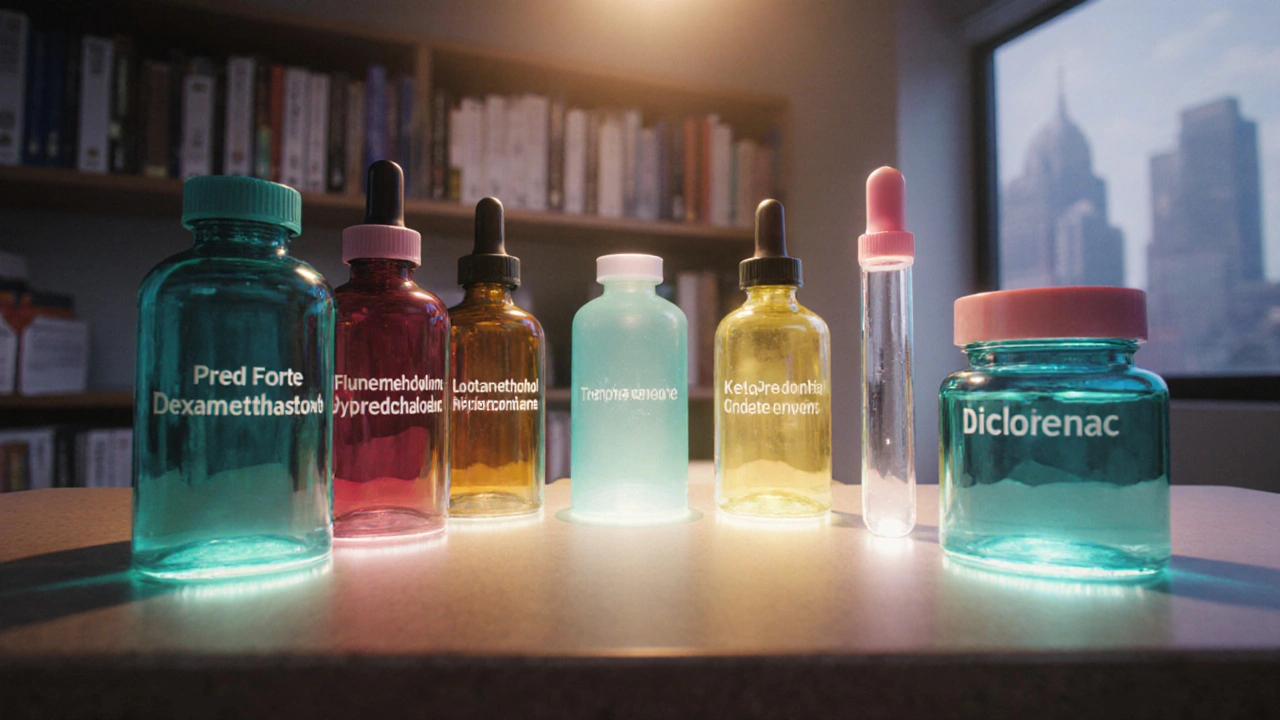
Side‑Effect Snapshot
All eye drops can irritate, but steroids bring unique concerns. Use the table below to see how each option stacks up.
| Drug | Potency | Onset | Typical IOP Impact | Cataract Risk | Cost (AU$) |
|---|---|---|---|---|---|
| Pred Forte (Prednisolone 1%) | Medium‑high | 30‑60 min | Moderate ↑ (5‑10 mmHg) | Low‑moderate (long‑term use) | ~30 per bottle |
| Dexamethasone 0.1%/0.5% | High | 15‑30 min | High ↑ (10‑20 mmHg) | Higher (potent) | ~45 per bottle |
| Loteprednol etabonate 0.5% | Low‑medium | 45‑90 min | Low ↑ (≤5 mmHg) | Very low | ~40 per bottle |
| Fluorometholone 0.1% | Medium | 30‑60 min | Low‑moderate ↑ | Low | ~35 per bottle |
| Hydrocortisone 0.5%/1% | Low | 1‑2 hrs | Minimal | Negligible | ~25 per bottle |
| Ketorolac 0.5% NSAID | N/A (anti‑inflammatory) | 1‑2 hrs | None | None | ~20 per bottle |
| Diclofenac 0.1% Gel | N/A (anti‑inflammatory) | 1‑2 hrs | None | None | ~22 per bottle |
When to Choose Pred Forte Over Alternatives
Here are three common clinical scenarios and the reasoning behind picking Pred Forte.
- Post‑cataract or retinal surgery - The surgeon wants rapid, deep anti‑inflammatory control. Pred Forte’s good corneal penetration and brisk onset make it a first‑line choice.
- Severe anterior uveitis - High inflammation demands a medium‑high potency steroid; the risk of IOP rise is monitored, but the benefit outweighs it.
- Allergic conjunctivitis unresponsive to antihistamines - When redness and swelling are pronounced, Pred Forte can quickly break the inflammatory cascade.
If any of these situations also involve glaucoma or a history of steroid‑induced IOP spikes, the clinician might swap in loteprednol or fluorometholone to keep pressure under control.
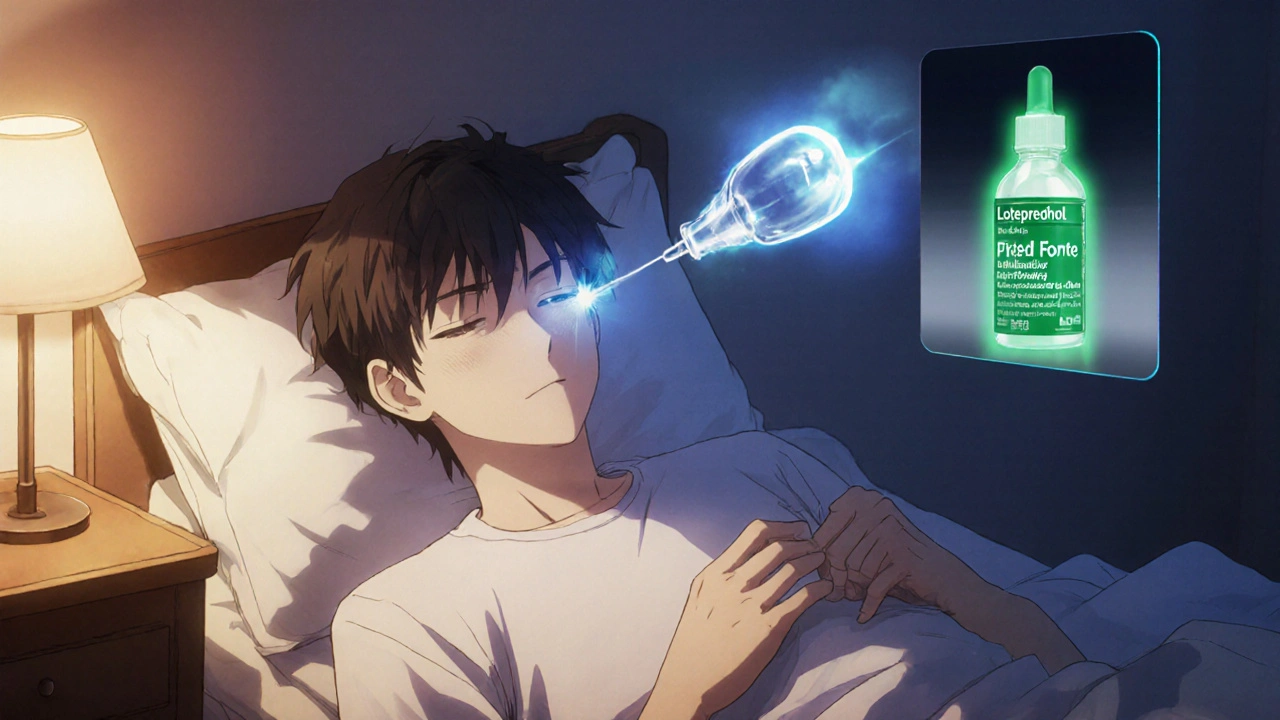
Practical Tips & Common Pitfalls
- Always taper - Stopping a steroid abruptly can cause rebound inflammation. Reduce drops gradually over 1-2 weeks.
- Monitor IOP - Check pressure after the first week of therapy, especially in patients with known glaucoma risk.
- Avoid concurrent NSAIDs unless prescribed - Mixing NSAIDs and steroids can irritate the cornea for some patients.
- Watch for cataract formation - Long‑term (months) use can accelerate lens opacities; consider switching after the acute phase.
- Preservative‑free options - If the patient has dry eye, a preservative‑free formulation (available for loteprednol and some prednisolone brands) reduces surface toxicity.
Frequently Asked Questions
Can I use Pred Forte if I have glaucoma?
Use extreme caution. Pred Forte can raise intra‑ocular pressure, which may worsen glaucoma. If treatment is essential, the eye doctor will schedule frequent IOP checks and may limit the course to a few days, then switch to a softer steroid like loteprednol.
How long is it safe to stay on Pred Forte?
Typically 1-2 weeks for postoperative inflammation, followed by a taper. Prolonged use beyond a month increases cataract and IOP risk, so a doctor will usually transition you to a milder agent if longer therapy is needed.
Is there a generic version of Pred Forte?
Yes, generic prednisolone acetate 1% eye drops are available in Australia and are often covered by the PBS, reducing out‑of‑pocket cost compared to the brand‑named Pred Forte.
What’s the difference between prednisolone and dexamethasone?
Dexamethasone is roughly twice as potent and works faster, but it carries a higher chance of raising eye pressure. Prednisolone is a bit gentler and is often preferred when the inflammation isn’t extreme.
Can I switch from Pred Forte to an NSAID after surgery?
Many surgeons start with a steroid for the first 24‑48 hours, then transition to an NSAID like ketorolac for continued control without steroid‑related risks. Always follow your eye doctor’s specific schedule.
Choosing the right eye‑drop boils down to balancing potency, safety, and cost for the specific condition you’re treating. Pred Forte remains a solid, reliable workhorse for moderate‑to‑severe inflammation, but alternatives such as loteprednol or fluoro‑metholone can spare patients from pressure spikes, while NSAIDs tackle pain and mild inflammation without any steroid side‑effects.
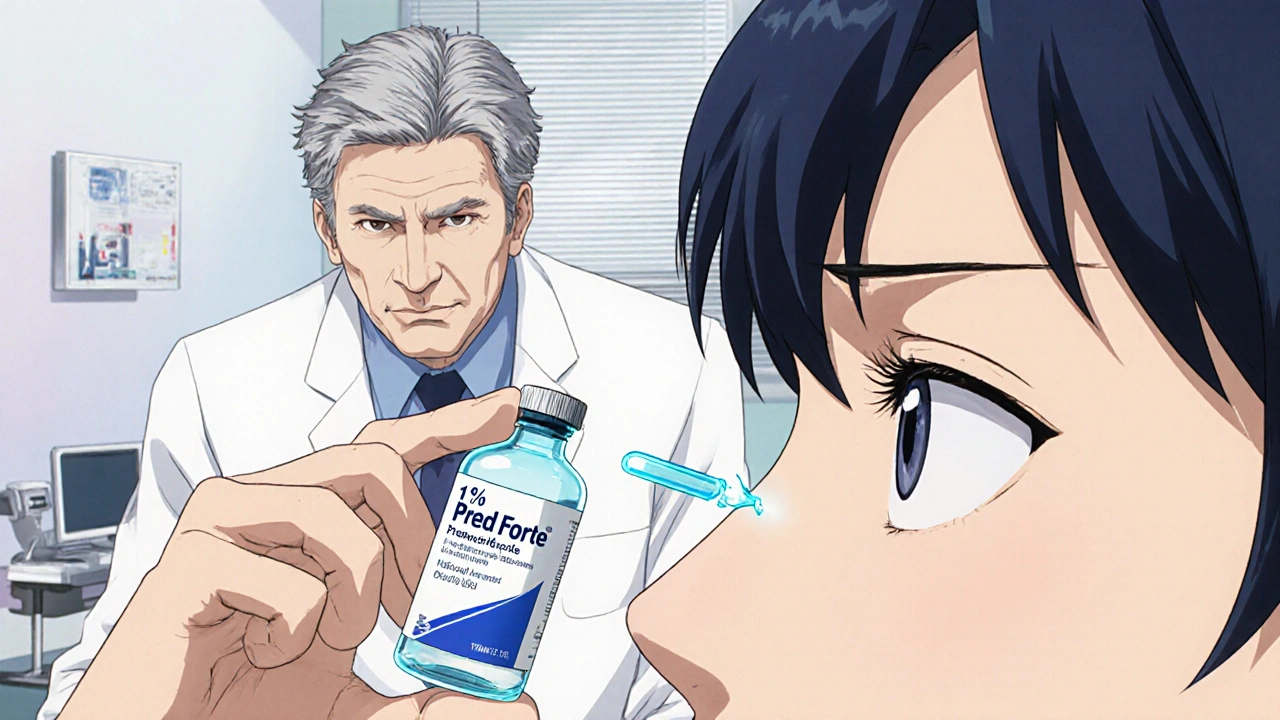
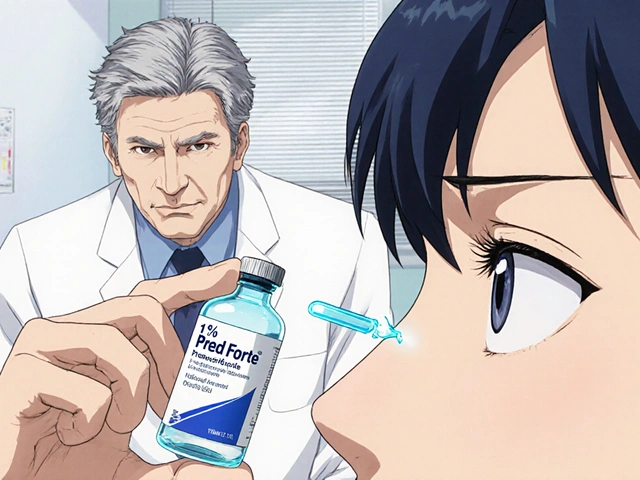

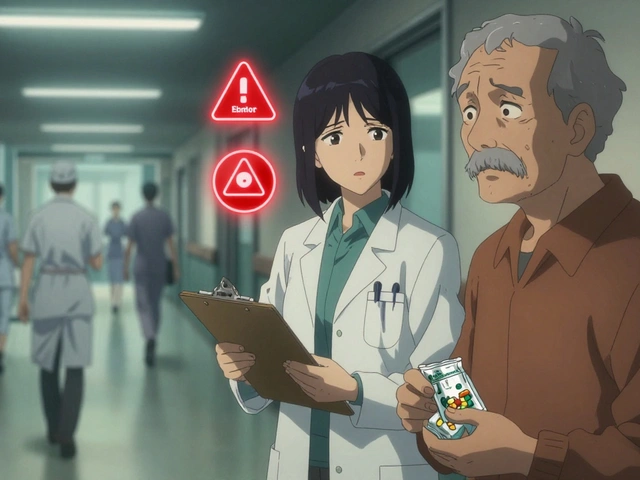
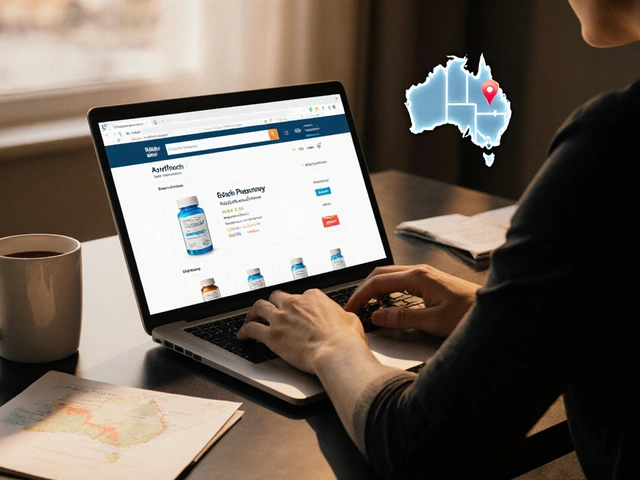
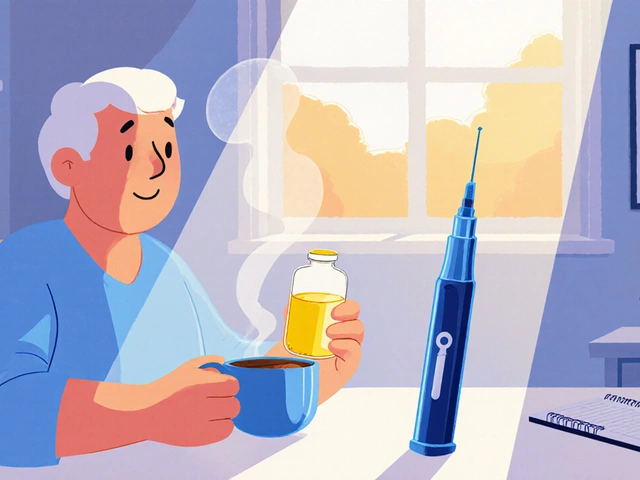
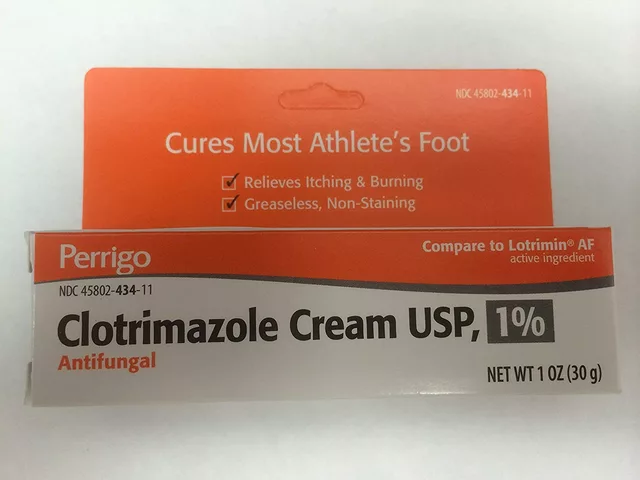

laura wood October 20, 2025
Pred Forte definitely has its place, especially when you need that quick, deep anti‑inflammatory effect after surgery. It’s reassuring to have a medium‑high potency option that works within an hour. Just remember to taper and keep an eye on pressure.
Israel Emory October 20, 2025
What a mess! The post tries to be balanced; however, it glosses over the real danger of IOP spikes-seriously, readers need to be warned!! If you’re not a specialist, you could end up with glaucoma, and that’s unacceptable; you must demand stricter guidelines.
JessicaAnn Sutton October 20, 2025
While the overview is comprehensive, several statements lack citations, particularly the claim regarding cataract risk thresholds. The cost analysis also omits PBS subsidy nuances, which are vital for Australian patients. A more rigorous evidence base would strengthen the argument.
Wesley Humble October 21, 2025
The pharmacokinetic profile of prednisolone acetate indeed offers superior corneal penetration, as demonstrated in multiple peer‑reviewed studies. Nonetheless, the IOP elevation risk remains clinically significant, warranting vigilant monitoring. 📊
Deja Scott October 21, 2025
I appreciate the clear breakdown of alternatives; it makes decision‑making less daunting for both clinicians and patients.
Rajesh Myadam October 21, 2025
Absolutely, having a concise summary helps frontline providers quickly select the appropriate agent while considering safety and cost.
Mahesh Upadhyay October 21, 2025
Imagine a postoperative eye inflamed beyond control-only a potent steroid like Pred Forte can rescue the vision! Yet, misuse can doom you to cataract.
Ron Lanham October 21, 2025
Choosing the right ocular anti‑inflammatory is more than a simple cost‑benefit analysis; it is a nuanced balancing act that reflects both the pathophysiology of the disease and the individual patient’s risk profile. First, the potency of the steroid dictates how quickly cellular infiltration and cytokine cascades are halted, and medium‑high agents such as Pred Forte achieve this within an hour, which can be lifesaving for a newly operated eye. Second, the depth of corneal penetration cannot be ignored, because surface‑only agents may leave deeper inflammation unchecked, leading to complications that are harder to reverse. Third, the side‑effect profile, especially intra‑ocular pressure spikes, remains the Achilles’ heel of corticosteroid therapy, demanding regular tonometry checks. Fourth, the financial burden on patients is non‑trivial; while PBS covers many generic prednisolone preparations, brand‑name equivalents may still cost a fortune. Fifth, patient compliance hinges on dosing frequency-every one to two hours can be daunting, yet it is often necessary for optimal control. Sixth, the presence or absence of preservatives influences ocular surface health, especially in dry‑eye sufferers. Seventh, the duration of therapy dictates the cumulative risk of cataract formation, which escalates with prolonged exposure. Eighth, the surgeon’s preference often reflects personal experience with wound healing and scar formation. Ninth, the availability of softer steroids like loteprednol provides a safety net for glaucoma‑prone individuals. Tenth, NSAIDs such as ketorolac serve as valuable adjuncts, but they cannot replace the immunosuppressive power of steroids when inflammation is severe. Eleventh, clinical guidelines suggest a tapering schedule to prevent rebound inflammation-a detail sometimes overlooked in practice. Twelfth, patient education about warning signs, such as blurred vision or eye pain, is essential for early intervention. Thirteenth, the interplay between systemic corticosteroid use and topical administration can amplify side‑effects, a factor often missed during chart reviews. Fourteenth, regulatory nuances, including PBS subsidy criteria, affect prescribing patterns across regions. Finally, the decision must be individualized, integrating all these variables into a coherent therapeutic plan that safeguards vision while minimizing harm.
Alex Pegg October 21, 2025
Although many opt for softer steroids, I’d argue that in high‑risk uveitis cases, downgrading potency can delay recovery and increase scar formation. The data simply don’t support a blanket avoidance of Pred Forte.
Natalie Morgan October 21, 2025
Patient age influences steroid tolerance; younger eyes often handle higher potency without pressure spikes.
Andrew Hernandez October 21, 2025
Great overview; very helpful for everyday practice.
Kate McKay October 22, 2025
Remember, the key to successful eye‑drop therapy is consistency and monitoring. Start with the appropriate potency for the clinical scenario, then schedule regular IOP checks. If you notice any pressure rise, don’t hesitate to switch to a softer agent like loteprednol. Encourage patients to report any new visual disturbances promptly. Over time, this disciplined approach will protect vision while managing inflammation effectively.
Sebastian Green October 22, 2025
Well said.